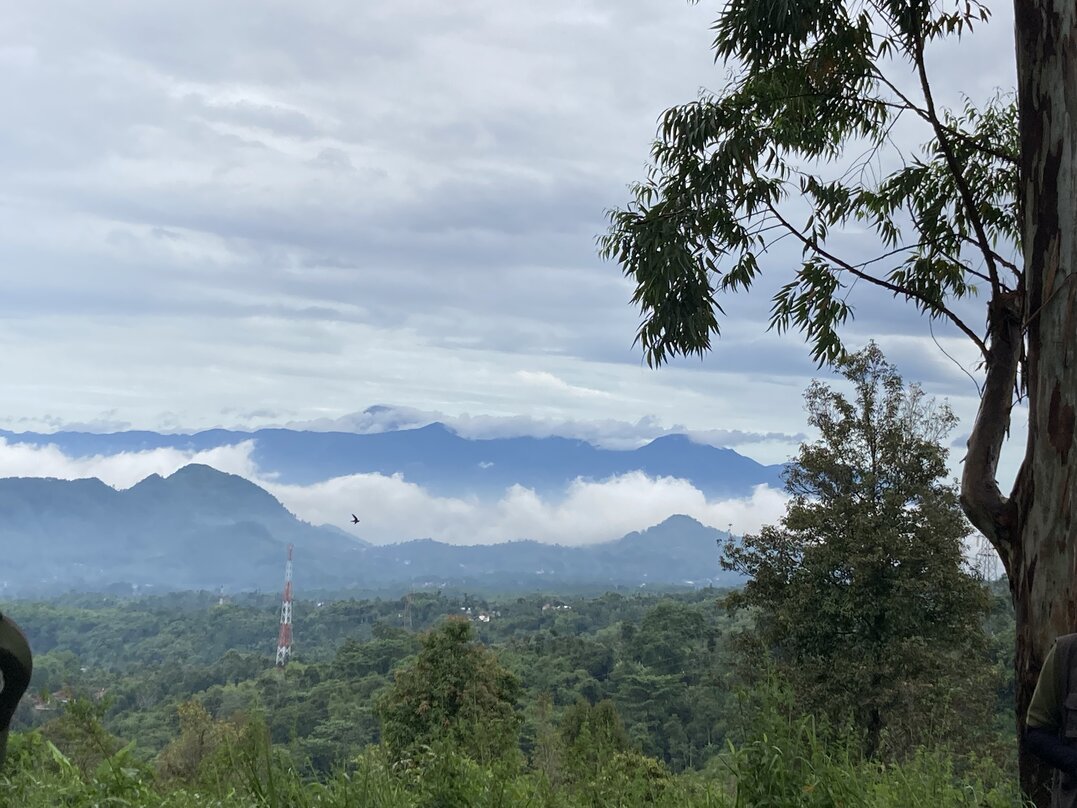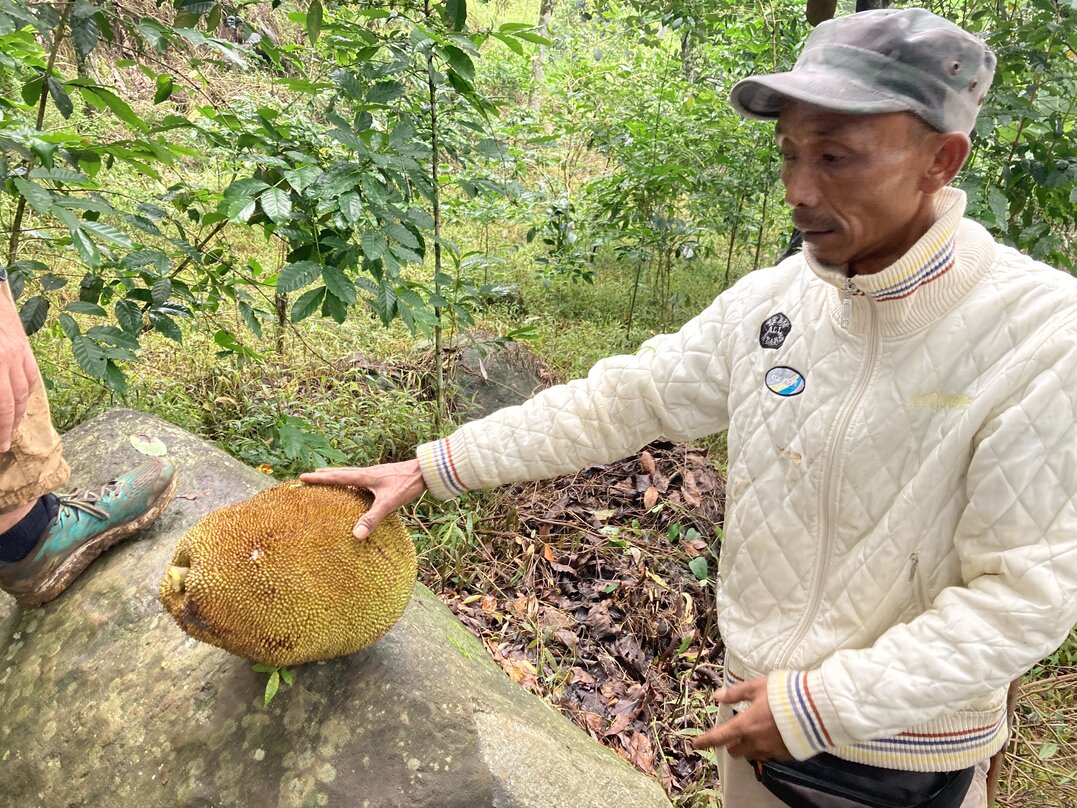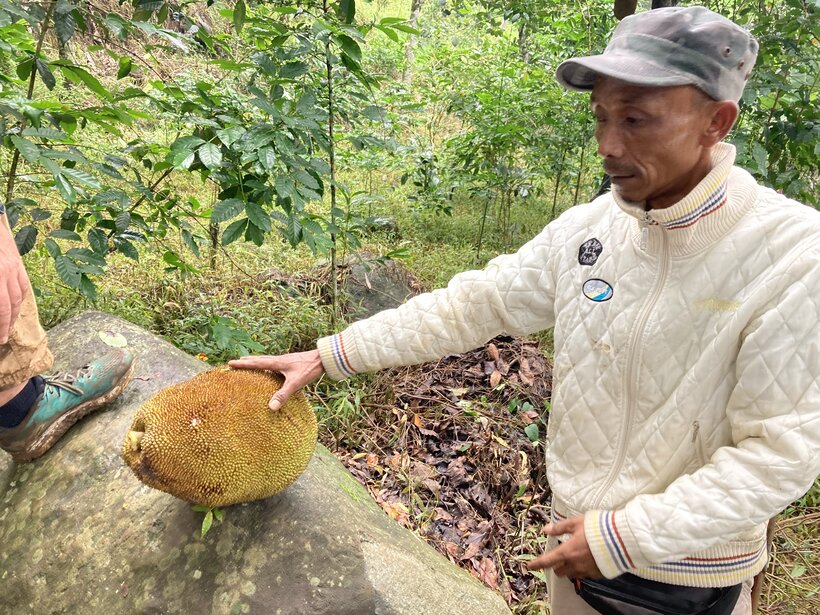Making Indonesia's social forestry system work: An innovative business model approach

Not far from the national textile hotspot of Bandung lies one of our projects between the foggy mountains of West Java. We visited the place with our esteemed guests from Germany in early January 2024. Above all, what makes this project so special is the authentic characters of the farmers.
Alex is one of the coordinators who organizes the yearly single-tree monitoring activities. During the visit, he tells us about the long drought they experienced in the last year and the late arrival of the rainy season. It’s a phenomenon we have experienced with all our tree-planting partners. In general, when you ask people about the rainy season in the western/central part of Indonesia, they will usually remind you of a rule of thumb: all months that end with “er” are rainy months. In concrete: September to December. For anyone who has lived in Indonesia during the last decade, it is obvious that this old rule doesn’t apply anymore. The rainy season has shifted over the past years. For this year we didn't experience any enduring rain before mid-December. An effect of climate change? Most likely.


Alex also tells us about the history of the land we walk through. Until not long ago, parts of the land were utilized by the state-owned enterprise Perhutani as a pine plantation for resin production. However, the activities of Perhutani became less and less over the last decades leading the area to become partly unproductive shrubland and partly used by local people for agriculture activities.
This is far from being an individual case in Indonesia. Perhutani has lost its importance over the years and is not able anymore to manage the area it was initially responsible for. To better understand the following, let me give you a bit of context. Two-thirds of Indonesia’s landmass, an area of about 124 million hectares, is declared as forest estate, owned and administered by government agencies. The term forest estate might be misleading since it doesn’t mean that this area is actually fully covered by forest. Much land is deforested and fully degraded or subject to illegal logging and illegal mining.
To be able to preserve still-existing forests and to reforest deforested areas, the government is reliant on handing out permits allowing third parties to lease and manage land for a certain period of time. Among other factors, the decline of Perhutani has led to the introduction of the social forestry initiative in Indonesia in 2007, which was further strengthened with additional regulations in 2016. Under this initiative, the Indonesian state is handing out permits for forest estates to farmer communities directly, making them the official land leaser. Unarguably an amazing democratic development. However, as often, there is quite a discrepancy between good ideas and successful implementation. This is reflected in the actual number of permits handed over.
In 2015, the Indonesian government released its plan to convert 12.5 million hectares of forest estate into social forestry in a four-year period. However, only 20% of the initial planning was achieved in 2019. Still today the Indonesian government is trying hard to push these numbers. One problem is that farmer groups are not able to fulfill the administrative requirements to apply for these permits.
Once a farmer group has managed to pass the application and are permit holders, they can utilize the land under the specific conditions for the respective areas set by the government for 30-35 years.Throughout this lifetime there are multiple inspections to see if the goals of the initial management plan are met. However, communities often find themselves unable to utilize the land as initially intended. A lack of financial and organizational capacity leaves most of the land untouched or at least not maximally utilized. This of course backfires on the Indonesian government which is putting lots of responsibilities on the farmer communities.
We remember the initial negotiations with the farmer group and recall that this project is just another example that reflects this situation. The farmer group was given the official permit in July 2018 with a target to reforest 50% of the whole area. However as we have found out via satellite assessments in the initial due diligence process, there had been no reforestation done throughout these years. The farmer group hadn’t come one step closer to the achievement of their goals. If it had stayed this way they would have run into a risk of losing their permit.
This of course doesn’t mean the land wasn’t utilized at all. During our walk, we see lots of gardens full of crops. A wide variety of vegetables including pumpkins, carrots, lemongrass, eggplants, tomatoes, and ginger. What stands out the most are the coffee shrubs. One of our guests points in the direction of a coffee garden and asks Alex about it. Alex replies that they have planted coffee in this area for decades. They even established a small roastery next to his house to preprocess the coffee. Once more the thought runs through my mind: these guys are really diligent. But why haven’t they planted any trees? Why did they risk losing the permit of the land?
The answer is quite simple, Alex explains to me. People utilize the land in a way that provides them with short-term income. When they plant something, they expect revenue latest within a year. In the case of Coffee, it’s a bit different. However, coffee has been cultivated for decades in the area. Farmers know the plant, and they have the market access. But what do they gain from real trees? How could he have convinced his fellow farmers to plant something that hasn’t proven financially viable?
As we walk through the coffee gardens we see freshly planted tree seedlings between the lines of coffee plants. Alex points towards a small tree and tells me that it is a Rasamala tree. Rasamala is endemic to West Java and has a variety of uses, as the leaves provide medical benefits. Besides that, the tree will also serve as a shade tree for the coffee shrubs. It's one out of ten species that we have agreed to use to reforest the area in late 2022. It’s quite a special collaboration that we have, Alex tells me. It is the first time that they actually receive payments just for planting and monitoring, without needing to sell anything right away. The key to our business model.
We help our customers to achieve a carbon net-zero goal by providing accurate data on the one hand, and on the other hand we ensure long-lasting impacts by rewarding the farmer group monetarily once a year after they complete the monitoring. The ongoing payments to the farmer group are set up for a ten-year period, ensuring that the planted trees have an economic value before they can actually be further utilized. To be able to scale this approach we engage with partners on the ground as we do with Trees4Trees in this particular project. While we manage the incoming data mass, our partners continuously assist the farmers with forestry and capacity building training.
The area we agreed on for a collaboration spreads over 30 hectares. 41 farmers are involved. The goal: 21,000 trees, alive, well-maintained, and measured every year. Financed by an expected sequestration of 1,700 Tonnes of CO2e locked in trees over a lifetime of at least 30 years. If this and the other projects we started are successful, runs through my mind, we might really be at the start of something big. Dozens of social forestry permit holders have already reached out to us in desperate need of a partner to support utilizing their land. At that moment I am left wondering what the area will look like when I revisit it five years from now.
After our walk through the field, the farmer group invited us for lunch. They had prepared an old ritual that has been around in West Java for centuries but is very rarely practiced anymore in our modern world. It felt like being put out of this world just for a little while.